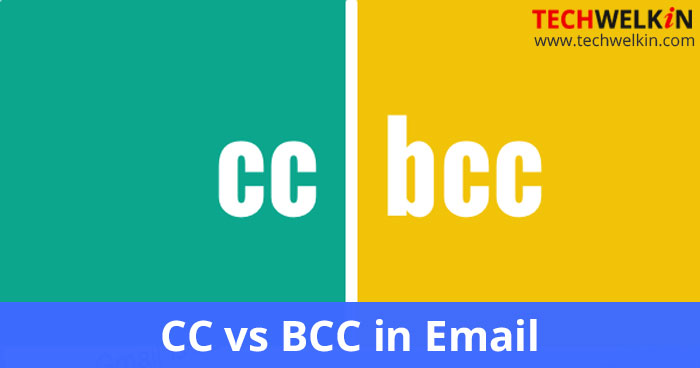This is one of those things that is supposed to be known by all netizens and yet the question often comes up. A large number of not-so-tech-savvy people often feel confused about the difference between CC and BCC in context of email. But let me tell you, from my experience, that even a lot of tech-savvy people don’t know the difference –or probably they do not care. Knowing about CC and BCC fields and their purpose in email is not only a good piece of knowledge to have but also it is part of email etiquette that we should follow.
Today we will delve deeper in the CC and BCC fields and see how they are different from each other.
What are CC and BCC fields?
Well, when you send an email, there must be a recipient. We all know that the email address of the recipient should be put in the To field when you compose an email.
CC stands for carbon copy. Email addresses in this field will receive a copy of the email. CC is done just to keep the recipients informed about the matter that sender and recipients in To field are discussing through email. This is also called keeping CC recipients in the loop. CC recipients are not generally expected to reply and intervene unless there is a reason.
BCC stands for blind carbon copy. This field is almost same as the CC field with only difference being that none of the recipients will know who else was sent a BCC copy of the email. BCC is generally used when you want to send bulk email. For example, if you want to send some information to 400 people, it would be inappropriate to put all the email IDs in To or CC field.

Why would it be inappropriate to put lots of email addresses in To or CC fields?!
Putting everyone’s email addresses in To or CC field would expose everyone’s email addresses to everyone else. This way you’re not just sending the intended information across, but also you’re distributing email addresses to everyone –which could be misused.
Some people may not mind disclosure of their email IDs in such a fashion –but a few certainly would mind. So, in such a scenario, you should put all the addresses in the BCC field and your own address in the To field. So, effectively you will get your own email and everybody in BCC would get a blind carbon copy –and they would not know who else also got the copy of that email.
Difference Between CC and BCC
| CC | BCC | |
|---|---|---|
| 1. | Stands for Carbon Copy |
Stands for Blind Carbon Copy |
| 2. | Email addresses in CC field are displayed to all the recipients | Email addresses in BCC field are not displayed to any of the recipients |
| 3. | Generally used to keep other people in the loop | Generally used to secretively send email copy to other people |
| 4. | When Reply to All option is used, all CC recipients would receive the reply | On Reply to All, BCC recipients do not receive a reply. |
| 5. | CC is often used when a group of people are engaged in team work | BCC is often used to send bulk email. Recipients are generally not part of a team |
We hope that this quick explanation of the difference between CC and BCC fields in email was useful for you. Should you have any questions or suggestions on this topic, please feel free to use the comments area. Thank you for using TechWelkin!

thanks for sharing the information
Dear Sir,
I appreciate your razor-sharp article on cc and bcc.
Thanks for sharing such valuable information to me.
Regards,
Parthasarathy Mallick
Sr.Journalist
Bhubaneswar,Odisha